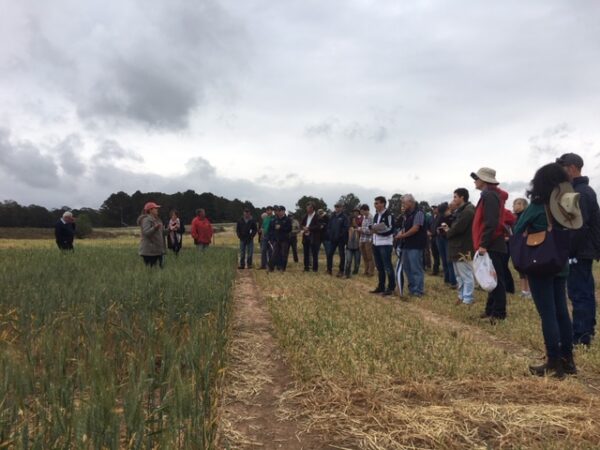Scientists and growers have a Field Day
Building on a long tradition of agricultural innovation, CSIRO scientists presented their latest research to local farmers and agronomists at a Field Day at Ginninderra Experiment Station this week.
When CSIRO first acquired the Ginninderra property in the late 1950s, Elvis Presley was an emerging rock star and CSIRO was busy making breakthroughs with rabbit control, Australia’s first computer (CSIRAC) and the invention of the atomic absorption spectrophotometer.
In the years since, the Ginninderra Experiment Station (CSIRO Ginninderra) has been home to agricultural research and until CSIRO’s new research farm at Boorowa is fully operational, that’s still the case today.
Each year, our staff at Ginninderra, sow, manage and harvest about 30,000 crop research plots. We run a merino flock as part of general site management and for specific grazing and dual purpose cropping experiments.

Over the years CSIRO Ginninderra has played a part in crop breeding success stories and generated significant food production benefits for the farming sector and Australia, for example through selective breeding of:
- high yielding, disease resistant wheat varieties such as Lawson, Paterson, Gordon, Tennant, Brennan and Dennis.
- the long-season winter wheat Mackellar -the first wheat variety resistant to the major stunting disease, Barley Yellow Dwarf Virus
- BARLEYmax – a grain with superior health benefits that can help combat cardiovascular disease, Type 2 diabetes and colorectal cancer.
- Ultra-low gluten barley – Kebari® barley, a new grain that meets the World Health Organization’s recommendation for classification as gluten-free and is currently being used in gluten-free beer with a food version of the grain on its way.
The groundbreaking research continues, and this week, growers and agronomists braved the rain to hear first-hand about some of the latest research from CSIRO scientists including:
Jessica Hyles, Rudy Dolferus and Harriet Sangma spoke about how wheat flowering behaviour can be matched to local climate conditions (on the Monaro) to optimise crop yields and minimise risks posed by frost, drought and heat.

Jess Hyles explains her research on phenology and mutation breeding to improve wheat varieties for the Monaro region.
John Kirkegaard discussed the latest farming systems research including the benefits from sowing canola and wheat for dual purpose grazing and cropping. “Sowing 15-20% of the farm to dual-purpose canola can improve productivity by around $100 per farm hectare,” John said.
Rebecca Stutz spoke about new work to assess different forage types for improving the liveweight of lambs over late spring and summer, when pasture quality and quantity typically declines. The experiments at Ginninderra will compare the performance, for lamb finishing, of brassica varieties against dual purpose canola.
Ben Trevaskis talked about an exciting project called OzWheat which will use ‘big data’ to uncover the secrets from a century of selective wheat breeding. The aim is to adapt wheat for Australia and boost our national and international food production and security.
Tom McLucas introduced the Ginninderra farm and the plans to move the focus of our agricultural research to a 290 ha site in the heart of Boorowa’s farming district.
“As CSIRO Ginninderra transitions to a new future as a sustainable urban development, our agricultural research is moving to a purpose-designed and state-of-the-art research farm at Boorowa, over the coming years,” Tom said.
“Construction of new buildings at Boorowa is almost complete and our plans for water storage and irrigation systems to support our future trials are well advanced.”
